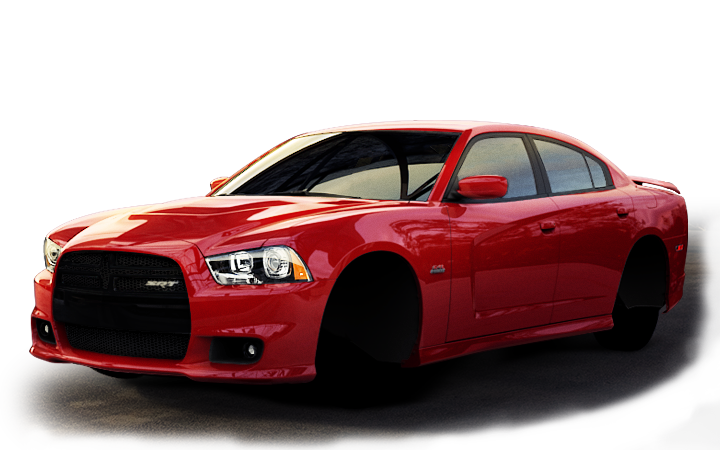
Do you love muscle cars? You'll find a lot of muscle car pictures online, so if you're looking for some inspiration, here are some places to find them. Pinterest, Facebook, and Tumblr are some of the top places to look. You might even find some of your favorites, which you can save to your computer and use as wallpaper. You can be imaginative if your photos of muscle cars really stand out.
'64 Pontiac GTO
1964 saw the Pontiac GTO become the first mass-produced model. This launched a new type of muscle car: the midsize. The 1964 Pontiac GTO was a popular car that year, with 32,450 sales. The GTO was created as a separate model for 1966. The car sold well. Although the exterior was unaltered, there were significant changes beneath the hood. The size of the 389ci V8 was increased from 300 to 400 cubic inches, while the fastest single carb version had a horsepower rating at 360. In addition, the two-speed auto transmission was replaced with a three speed TH400 transmission.
Pontiac introduced the GTO in 1964. This sparked the muscle car horsepower battle that continued until the 1970s when fuel efficiency was more important. Insurance companies didn't approve of high-powered cars. But street-fighting opponents might have caught up with GTO's speed.

'63 Corvette
This is the place to go if you are looking for a classic 63 Corvette. This page contains photos of the early generation of American muscle cars. These photos were taken in California where the car was made. While it's not possible to find a exact replica, these images represent the era. Since its debut, the '63 Corvette was one of most loved cars in the entire world.
The 1963 Chevrolet Corvette was the first sports car of its generation. It was the first American sports car to feature a split rear glass. However, many owners bought replacements for the split rear windows and these cars are now very rare. Although the split-window design was popular, it was soon abandoned by GM executives. Split windows were a costly mistake as they impeded rear visibility.
'64 Firebird Trans Am
Now is the time to go and see the original Firebird Trans Ams. These classic cars were originally released as a 1983 model. Many of their mechanical parts are similar to the Chevrolet Camaro. The Trans Am was also made famous by "Kitt" from the movie Night Rider. Not only is the Trans Am famous, but it was also the first American car to have dual airbags and a short/long-arm front suspension.
The original Firebird was introduced by the company in 1967. It continued to be produced until 1969. The original Firebird was introduced in 1967 and continued through 1969. It lasted eight years. The car's second-generation lasted from 1998 to 2001 and has been a collector's piece for decades. The Pontiac website has photos of 1964 Firebird Trans Ams. You can also view them on other car enthusiasts forums. You can view them here. And be sure to check out the gallery below for a more complete look at the car.

'65 Chevelle
The Chevrolet Chevelle is perhaps the most well-known muscle car of the late 60s. The Chevrolet Chevelle, a mid-sized performance car, was a popular seller and was one the best-selling cars at that time. It is still a popular muscle car, with hot rodders and collectors alike vying for it. The "muscle car", as the Chevelle images of muscle cars from '65 Chevelle clearly illustrate, is the ideal example of what that term means.
The '65 Chevelle was a Chevrolet's answer to the Ford Mustang and Pontiac GTO. Despite the high price, only 201 Chevelles were produced in 1965. However, when you look at the car's condition, it doesn't look great. It had almost every body panel covered in primer and trim. Someone had tried to graft a Mopar hood scoop onto it.
FAQ
How long is an automotive course?
A course in automotive lasts three years.
The first year of your training is devoted to theory. You will learn all about cars. The second year is dedicated towards practical training. This includes learning how to drive, fix engine problems, and doing other maintenance jobs around your car. You will spend the final year working in a local garage to gain real-world experience.
What is the difference between an automotive technician and a mechanic?
Although they may be similar, they are not identical. A mechanic repairs cars and an automotive technician performs maintenance.
A mechanic needs to be able and quick to use their manual dexterity. They must also be able to diagnose problems accurately and repair them effectively.
An automotive technician needs to be more technically skilled than a mechanic. They need to be able use tools such drills and wrenches, and read blueprints.
They should also be capable of safely performing complex procedures. They must be familiar with all types of electrical and engine systems.
They must also be capable of understanding how parts interact.
The result is that a mechanic often earns less than an auto technician. There are many job opportunities in both.
What information do I need about car mechanics
To be an auto mechanic, you don't have to know much about cars. All you need to know is how to fix things. It's why many people begin to fix things by fitting brake pads or changing tires.
You'll need to know how to read diagrams, understand written instructions and follow basic rules of good practice. You'll also need to be able to judge whether parts need replacing or repairing.
It's important to remember that you shouldn't attempt to repair vehicles without having received proper training and guidance. This is especially true if you deal with expensive components such as engines or transmissions.
Even though you don't need to be an expert on cars, it is important to understand the fundamentals of mechanical engineering and physical physics. This will include understanding the basic principles of engine operation and brake function.
It's also worth noting that you'll need to be prepared to deal with all sorts of situations. If your vehicle has been in an accident, you might need to be able to handle it. Also, you'll need to be familiar with dealing with accidents or breakdowns.
It is important to be open to learning new skills quickly. Not only will you need to be capable of diagnosing problems, but you also need to be able perform simple maintenance tasks like tightening nuts.
What qualifications do you need to be a mechanic?
To become a technician, you will need to pass a series exams. These include:
-
A general knowledge assessment
-
A practical exam
-
An apprenticeship test
These tests are designed to ensure that you understand the basic concepts of mechanical engineering and physics before you start working as a mechanic.
These tests will allow you to be a mechanic once you have passed them. However, you'll still need to complete an apprenticeship. This will involve training in your trade.
To be able to repair vehicles, you'll need classes or workshops. Additionally, you will need to work with experienced mechanics.
For mechanic success, you'll need to be focused and meticulous. Vehicle repairs require you to be very attentive.
To be a successful mechanic, you will need patience and perseverance. If you don’t love to follow instructions, this may not the right career path.
This job is for you if you are passionate about cars and love fixing them.
How can I fix my car as a hobby?
Take up a hobby in car repair if you have an interest. You could repair them yourself, buy parts for them and sell them. Or just have fun with them. It's a fun hobby that you can do if it interests you.
It isn't easy to turn it into a full time job. It requires hard work and dedication. It will also require a large amount of investment.
You may not be able to have an emotional connection with cars unless there is a valid reason.
What are the requirements of an automotive technician?
High school graduation or GED is required with excellent grades in English and math. You must also be able to read, and write. To be allowed to work, you must pass a written and practical test.
Is it important which college I go?
You're wrong. In terms of getting into the auto industry, there is no distinction between colleges. However, some schools offer better programs than others so if you're looking for something more specialized, look elsewhere.
Statistics
- 52% of Mechanics in the United States think their salaries are enough for the cost of living in their area. (indeed.com)
- According to the BLS, the median annual salary for automotive service technicians and mechanics in the United States was $44,050 in May 2020. (uti.edu)
- Apprentice mechanics earn significantly less hourly than mechanics who have completed training, with a median wage of approximately $14.50 an hour, according to PayScale. (jobhero.com)
External Links
How To
How to get a mechanic certification
For those who are interested in becoming certified automotive technicians, the mechanic's certifications will help. They provide an overview of all areas of auto repair, including engine diagnostics, electrical systems, brakes, suspension, steering, fuel injection, air conditioning, heating, exhaust, transmission, diagnostic tools, body repairs, collision damage repair, collision repair, paintless dent removal, motor vehicle emissions testing, and much more.
The program includes 12 hours of classroom instruction as well as three months of training on the job at a participating dealer. Students must complete at least 60 hours of classroom work per semester. They also need to pass a written test that covers theory and practical questions. After completing the coursework students are eligible to take the National Institute for Automotive Service Excellence state examination (ASE). For employment as an automotive technician, certification by ASE is necessary.